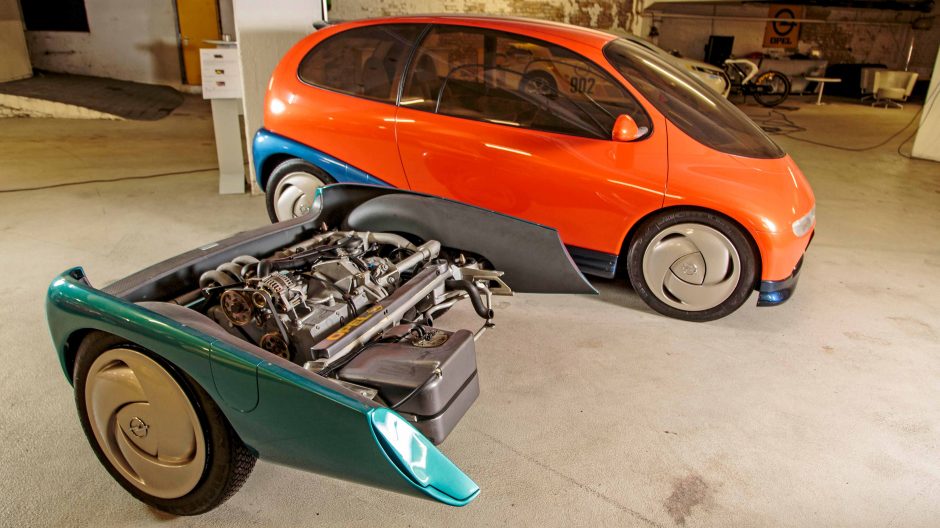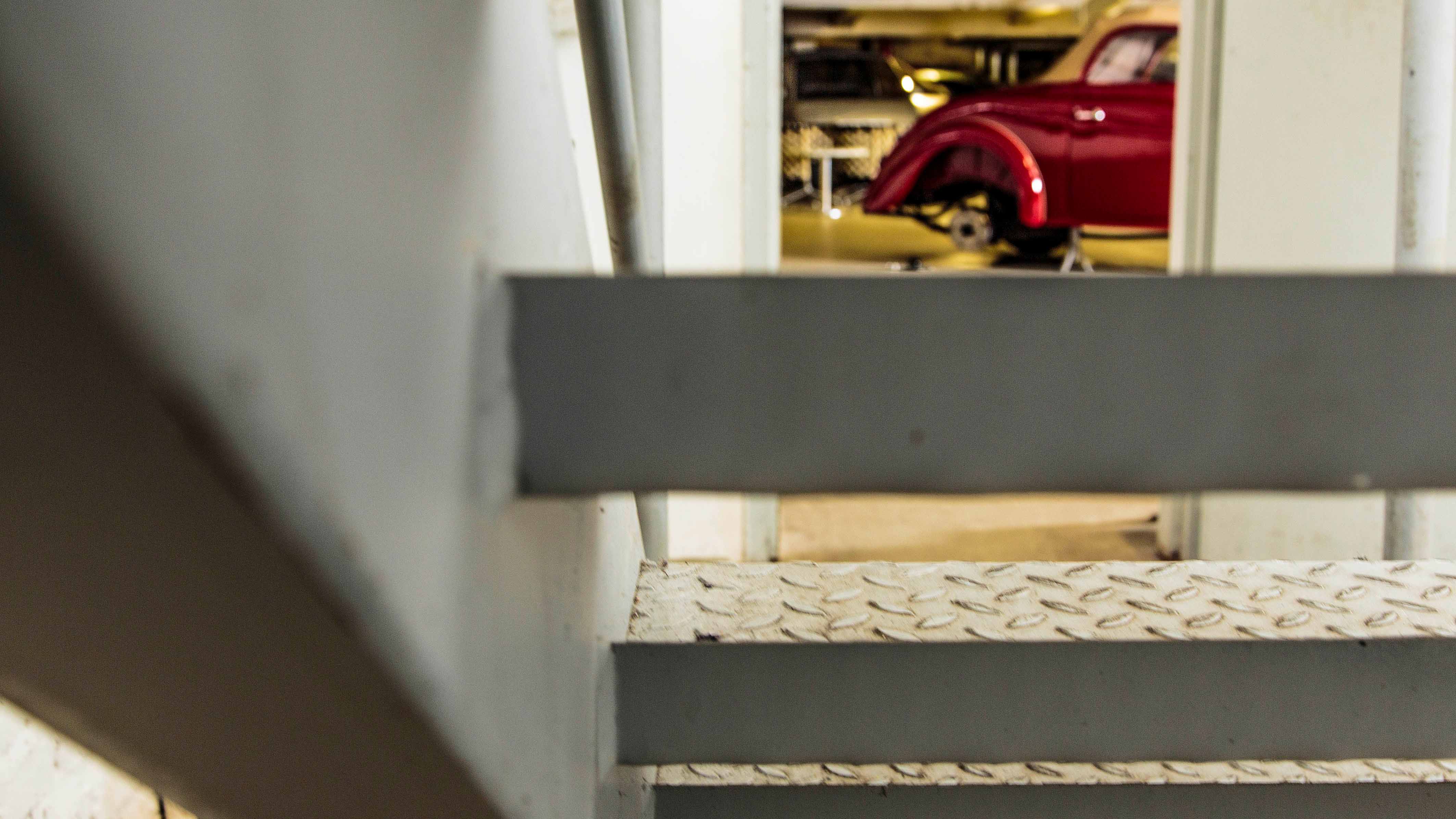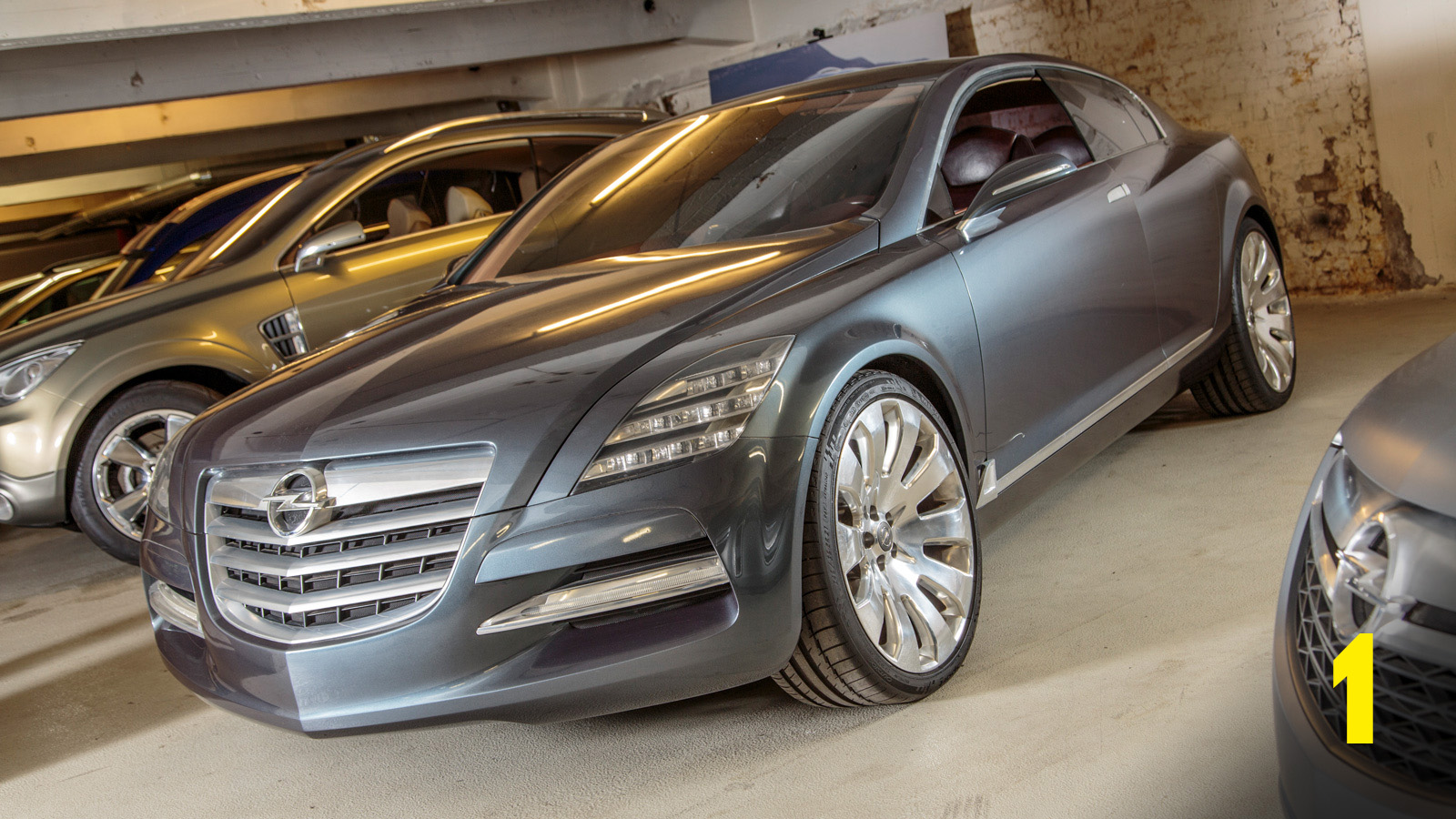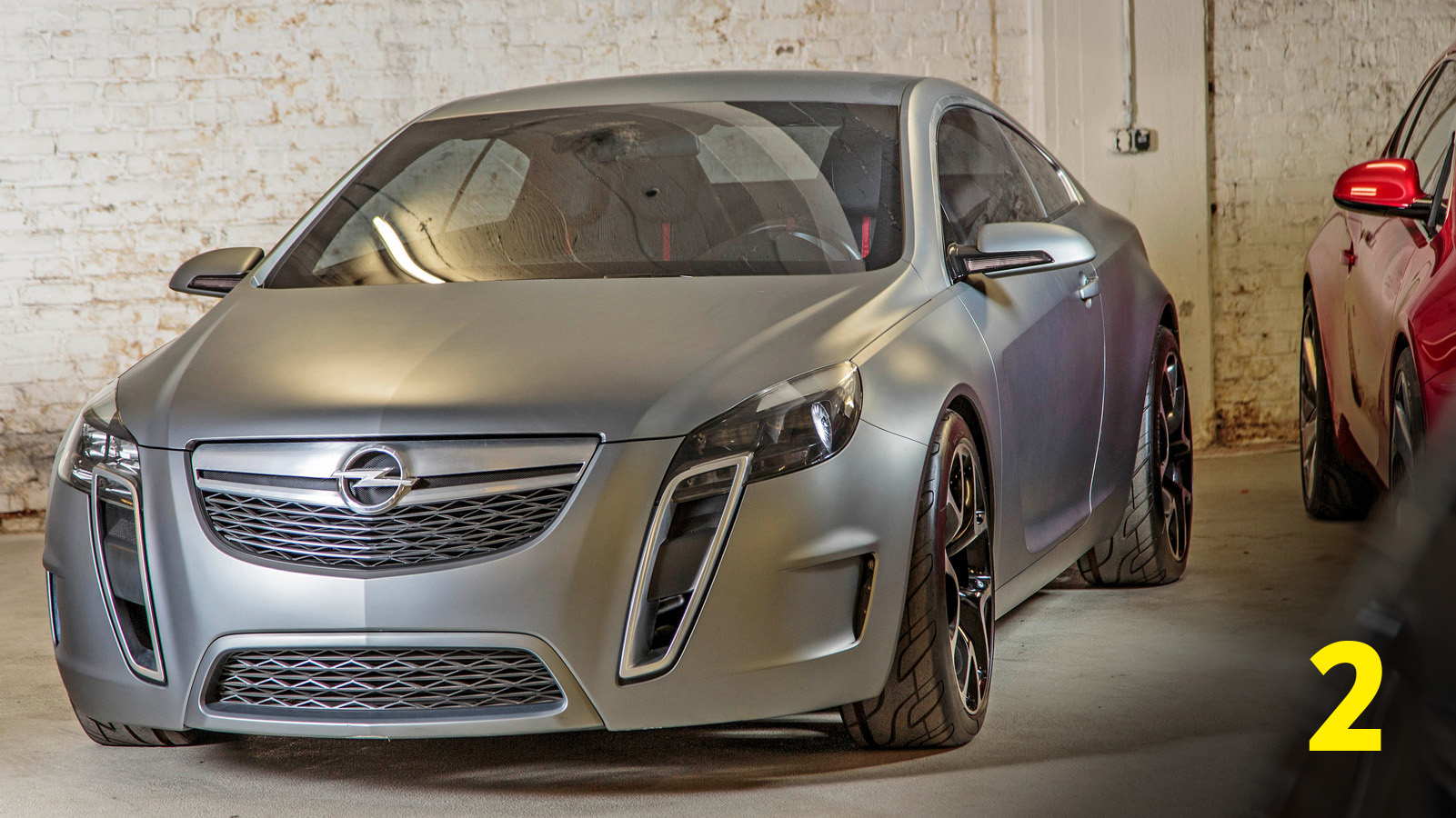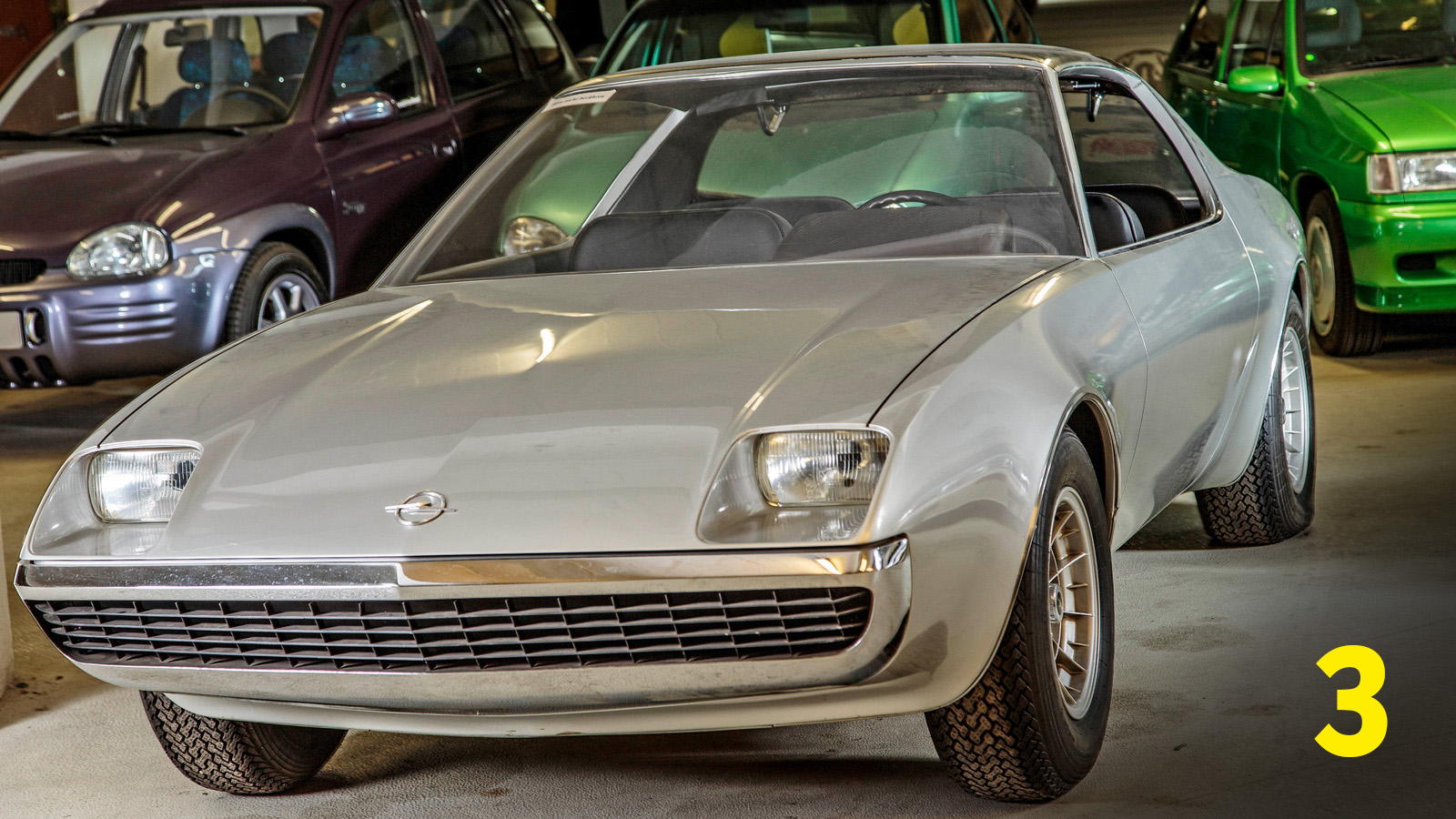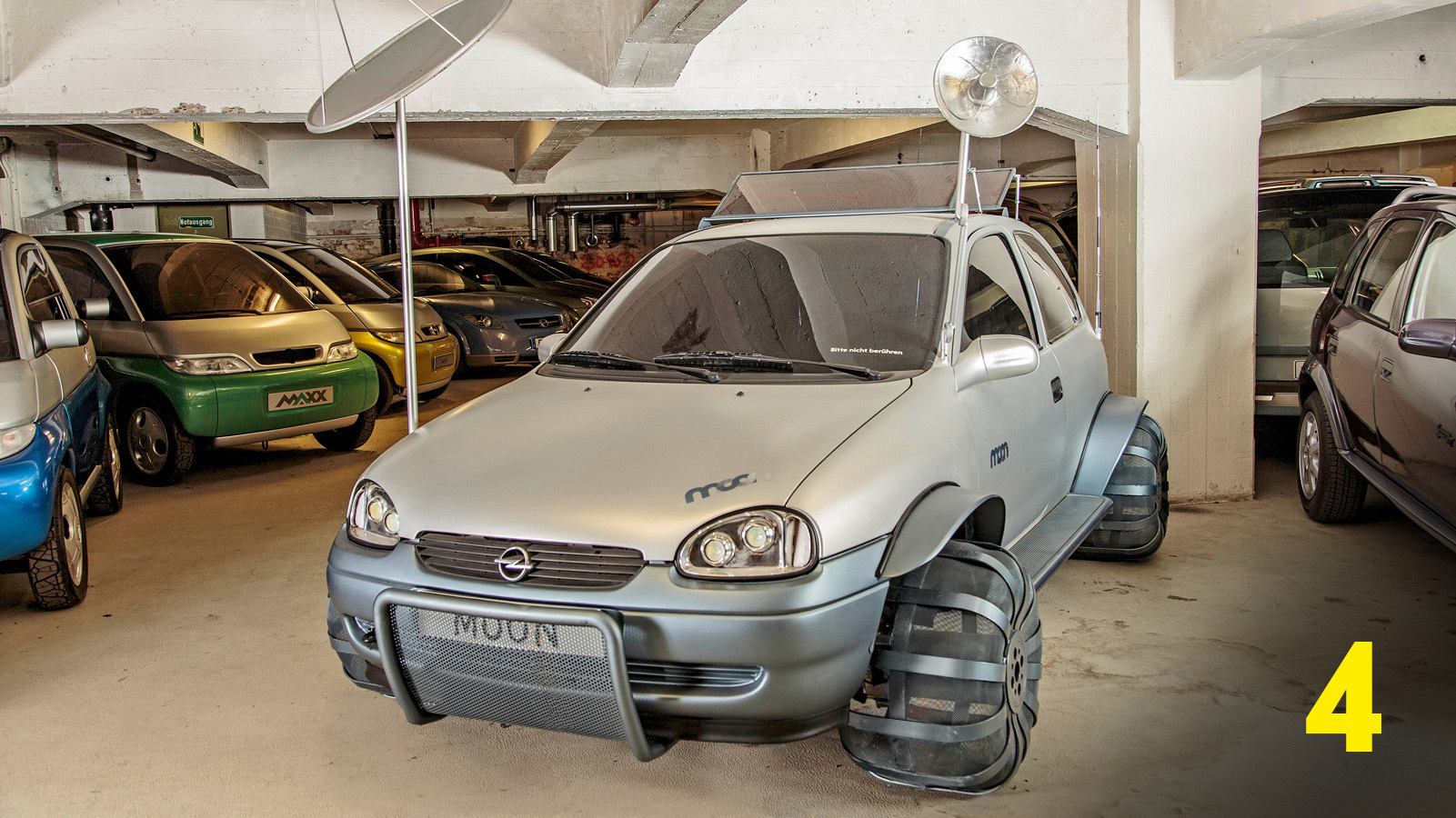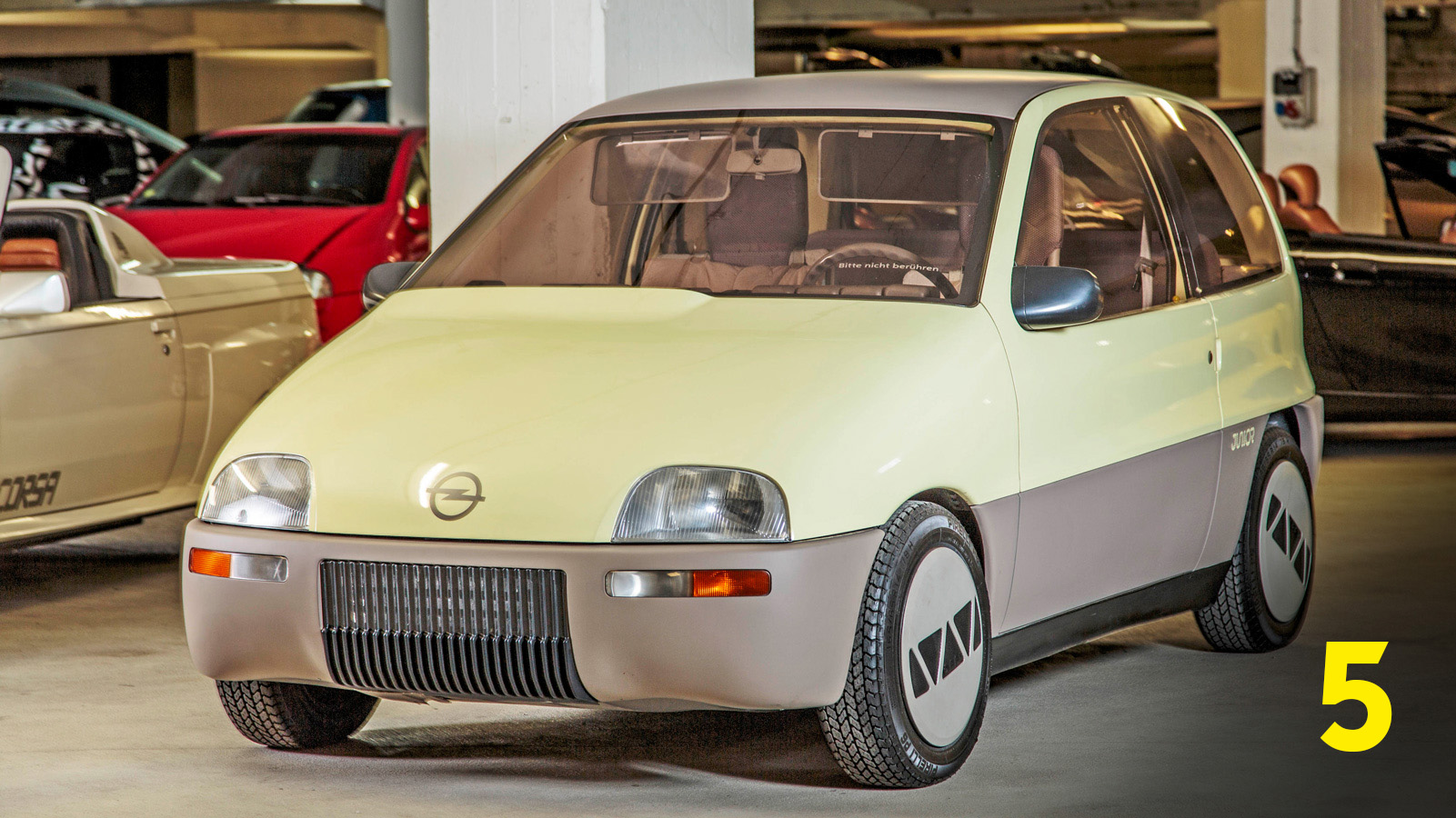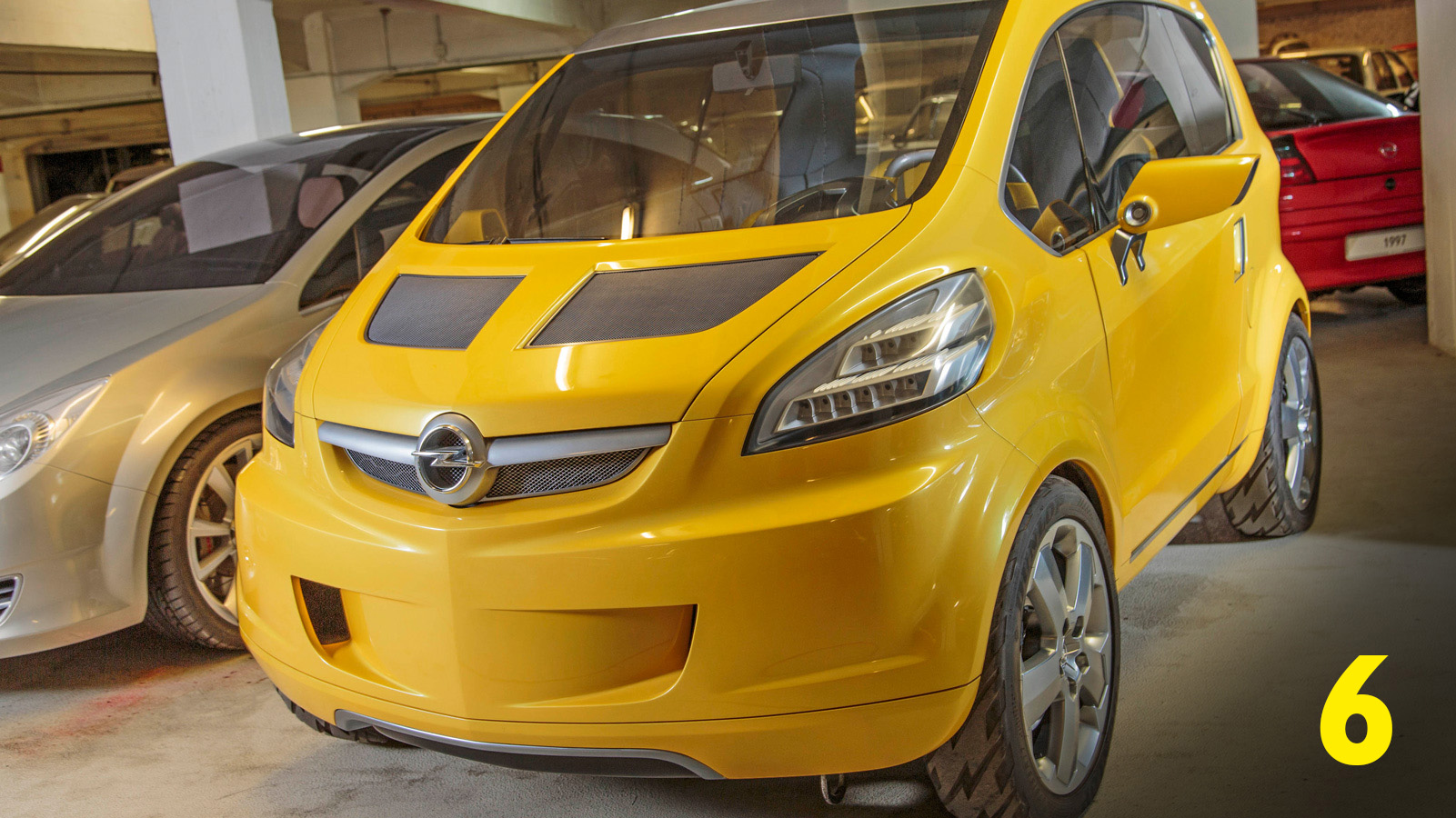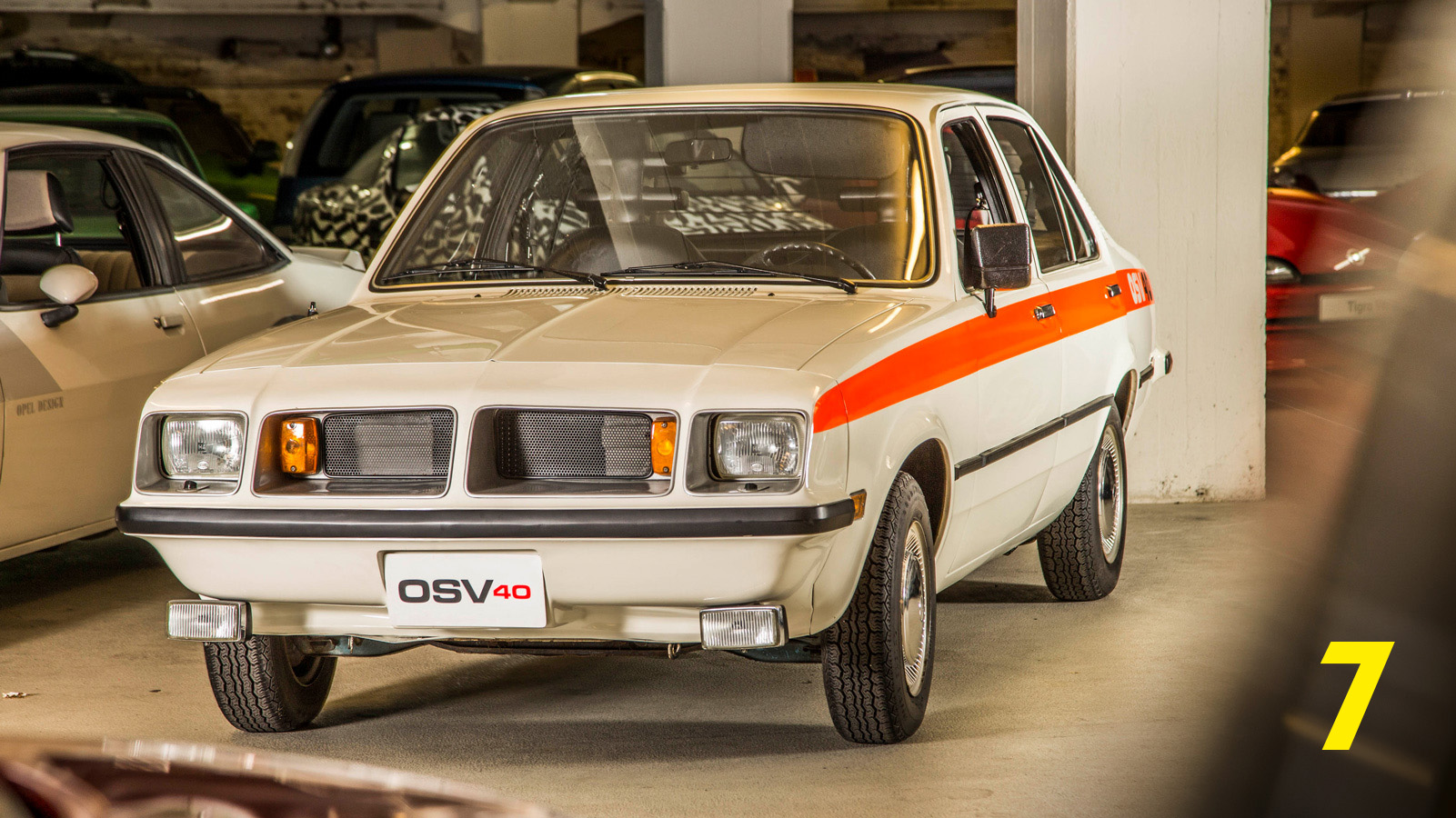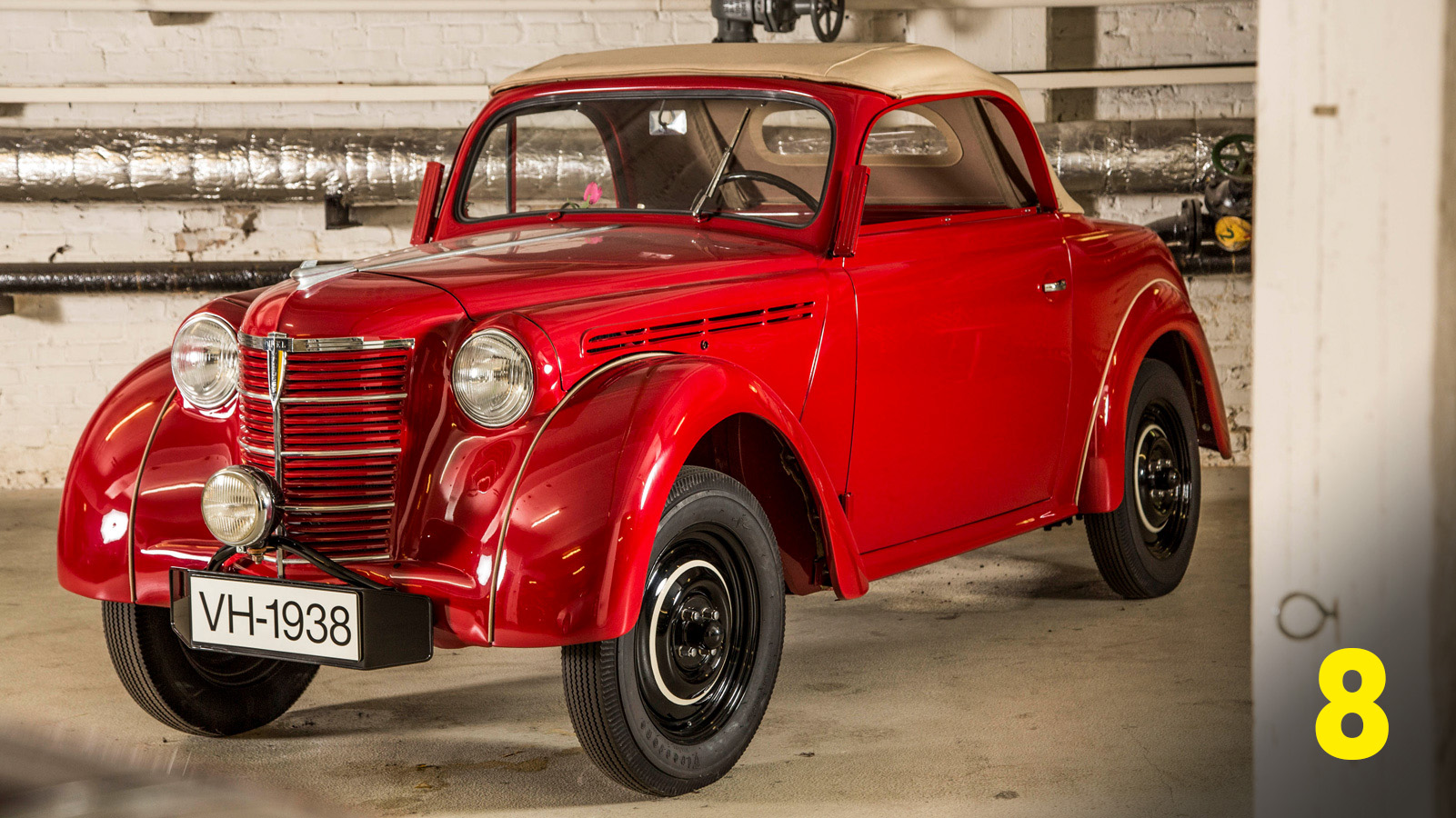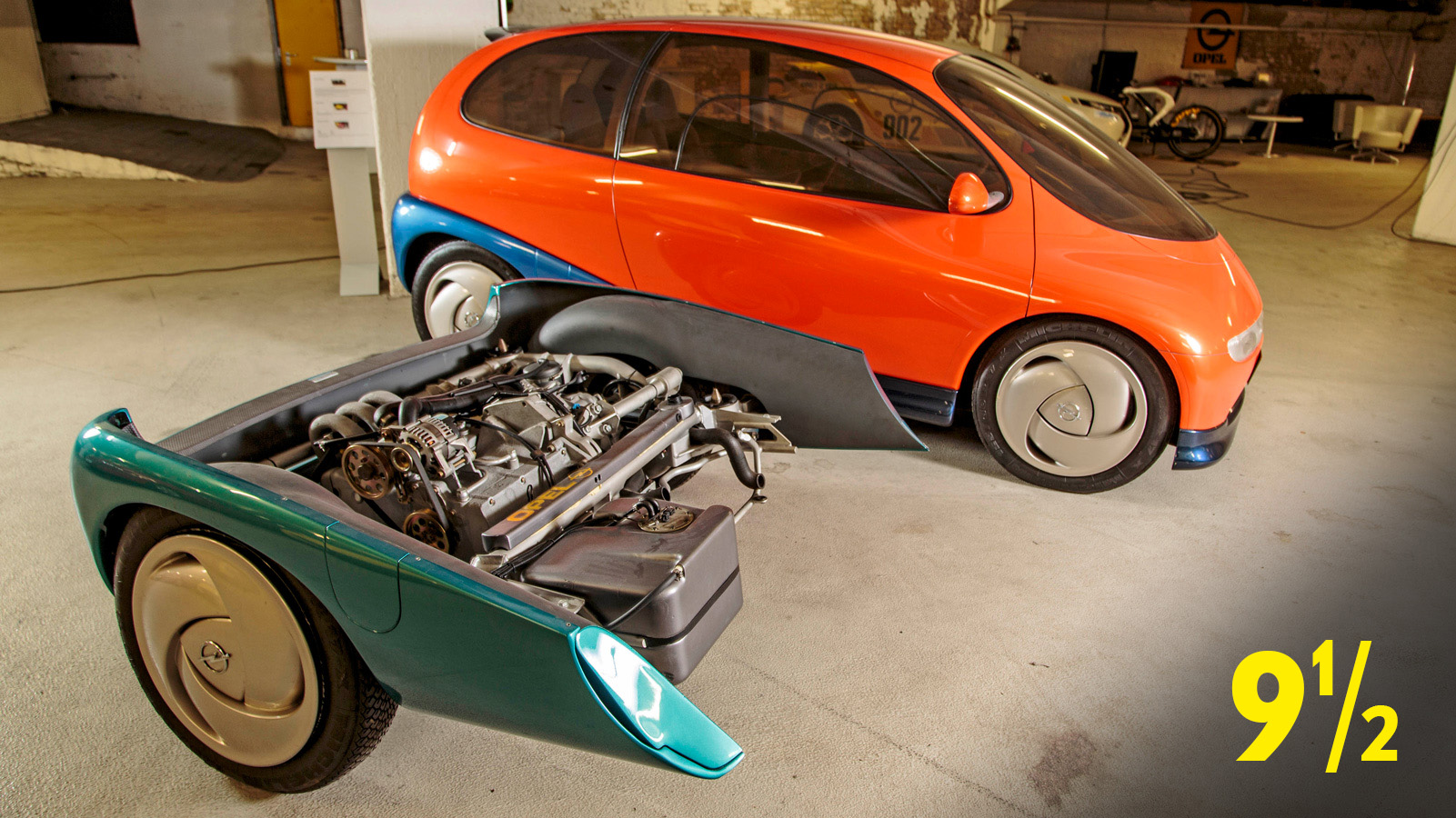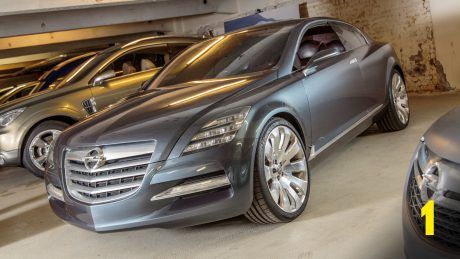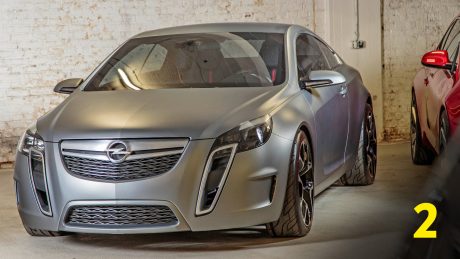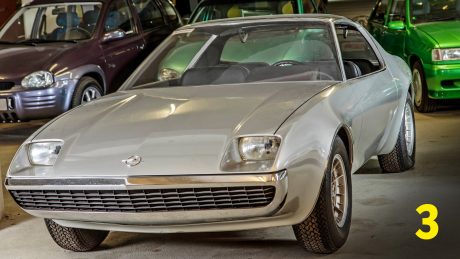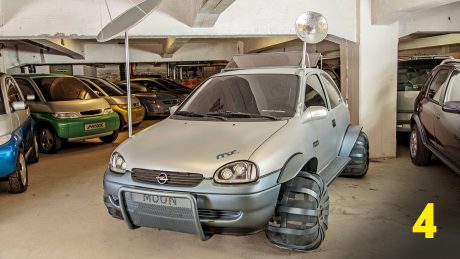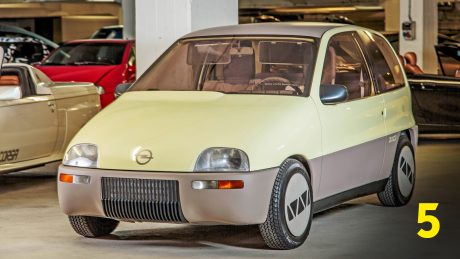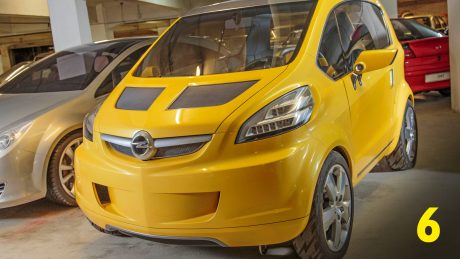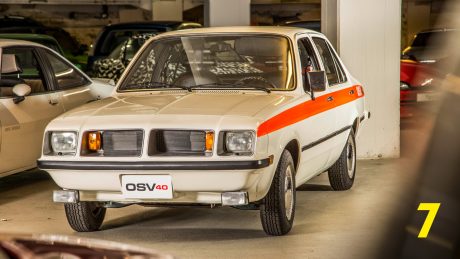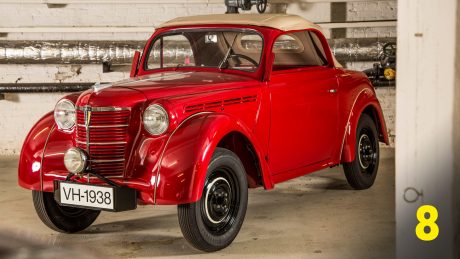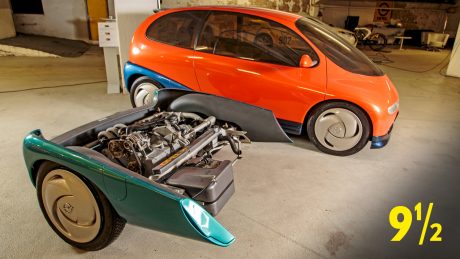- We have put together a concise photo series of the striking concept cars for Opel Post readers.
- INSIGNIA (2003) The story of the Opel flagship model began in the year 2003, when Opel presented a concept car by the name of Insignia at the IAA International Motor Show in Frankfurt, Germany. This vehicle featured a number of basic characteristics that would reappear in the Series model five years later – take a look at the front, shoulder, and roof line, which is evocative of a Coupé. “Unfortunately,” confides Jens Cooper, “this concept car was a bit too large, which is why the designers subsequently focused on creating more compact designs.” The creatives drafted over 500 design sketches before deciding on the final Insignia style.
- GTC CONCEPT (2007) The result of all this work was visible at the 77th Geneva Motor Show four years later, where Opel presented this silk gray racecar, ushering in an entirely new era of design in the process. The athletic Gran Turismo Coupé featured an aggressive front atop thick 20-inch wheels, a full 300 HP for excellent propulsion, and a 2.8-liter V6 turbo engine. “It was a real dynamo on the road,” said Jens Cooper. An intelligent, electronically controlled all-wheel drive system distributed power as the car drove. Moreover, this study was the first to feature the new, plastic brand logo on its crossbar.
- MANTA B DESIGN STUDY (1971) Room for a license plate? Stable A-pillar? Form follows function? So what? What really counts here is the car’s beautiful, purist design; its elegant, athletic lines; its Targa-style roof; its large windows. Says Cooper: “The design studio, under the direction of Erhard Schnell, was already working on a potential successor to the Manta A after it went into production. In doing so, the team was freed from the restrictions of traffic regulations.” This 1:1 fiberglass model did not leave the design stage. “It’s timelessly beautiful, but it wouldn’t be feasible to build,” says Cooper. The designers merely hinted at the model’s interior, without including any technical components.
- CORSA MOON (1997) The year is 1997. The Corsa has been sold an impressive 2.7 million times so far, in 75 countries around the world. High time, then, to conquer new territory, beyond the earthly realm. Opel creatives unveiled this special, tongue-in-cheek model, which embodies ‘extraterrestrial elegance,’ at a Corsa press conference in Tenerife, Spain, The accompanying press release read: “Air-independent wheels guarantee weightless comfort. The ecobeam and Indra solar turbo technology enable gentle, linear acceleration and a maximum speed of Mach 0.01.”
- JUNIOR (1983) ‘Junior’ was the working title for the car now known as ADAM. This name was a reference to the original Junior, which premiered in 1983. A progressive exterior design means that even after a good 30 years, this 3.41-meter-long study still doesn’t look dated. It also boasts an impressive interior: The seat covers are removable and can be used as sleeping bags, while the removable containers in the doors double as shopping baskets. Moreover, the vehicle features a modular design: All of the modules, such as the odometer, tachometer, and on-board computer, can be flexibly plugged in to the dashboard.
- TRIXX (2004) Powerful lines, short overhangs, and an emotional take on Opel design: Opel presented this super-compact city car study with sliding doors at the Geneva Motor Show in 2004. Although it is a mere three meters long, it can fit up to three adults and one child. Thanks to its flexible design, this small car can also stow away all sorts of baggage. The backseat is inflatable, and the passenger seat can be folded down. “And if you have to transport a standing lamp, you can open the ceiling hatch specially created for that purpose,” adds Cooper.
- OSV 40 (1974) Opel presented this experimental safety vehicle based on a Kadett at a time when features such as airbags and ABS still were a long way off from becoming standards. This model demonstrated how vehicle occupants could be better protected, following the basic design principle of incorporating high-performance crumple zones. The car’s soft bumpers, equipped with hard polyurethane foam, absorb the shock of a crash at up to 8 km/h without deforming. The sheet metal surfaces in the car’s interior are also generously cushioned with foam. “The OSV performed above average in crash tests. All four doors could still be opened after a crash at 65 km/h,” explains the Opel expert. Innovations resulting from the consistent further development of the crumple zones and belt tensioners later went into series production. “However, the synthetic foam in the interior was detached from the airbag.”
- KADETT STROLCH PROTOTYPE (1938) Database matching carried out in the archive in 2008 revealed photos of a vehicle that immediately excited the Opel Classic team. They learned that Opel designers had developed a graceful two-seater convertible sedan based on the popular Kadett in 1938. The test team assembled a prototype with an all-steel chassis and photographed it at the plant facilities in Rüsselsheim, Germany. This model was never put into series production. “One thing was clear to us from looking at the photos: We simply had to create a prototype,” said Cooper. A Kadett 38 served to supply replacement parts. “This Strolch is a one-of-a-kind model, and an excellent addition to our collection,” said Cooper.
- TWIN (1992) This electric car prototype caused quite a stir in Geneva in 1992. In designing this vehicle, the Opel engineers addressed the issue of range in a very unique way: The drive unit and electric engine can be replaced with a three-cylinder combustion engine for long routes. The replacement modules each contain the respective engine and energy storage device as well as the rear axle and rear wheels. This car also features a unique interior: The driver sits in the middle, and there is room for additional passengers on the backset. Says Cooper: “This concept would have done away with the need for manufacturing left- and right-hand drive versions.”
„Das ist die vermutlich längste Führung, die es je in der Classic Werkstatt gegeben hat.“
– Jens Cooper –
240 Minuten Opel pur – die zehn Gewinner des Opel Post-Adventsquizes erlebten eine Führung der Extra-Klasse in den heiligen Hallen der Classic Werkstatt. Wohlgemerkt Hallen – Mehrzahl. Denn neben dem Hauptraum gibt es unterirdisch noch jede Menge mehr zu entdecken. Jens Cooper, Mitarbeiter der Classic Werkstatt und der Opel-Experte schlechthin, führte die zehn Besucher nach gut zwei Stunden Rundgang in der Haupthalle inklusive einer Trockenübung am Gashebel des System Lutzmann und einer Sitzprobe im Grand Prix Rennwagen 1913 zu einer unscheinbaren Treppe. Zehn Stufen führen hinunter in die Katakomben: Und hier gab es satte 120 Minuten Nachschlag in Sachen Opel-Konzeptfahrzeuge. Für die Leser der Opel Post haben wir in der Fotogalerie eine kleine, aber feine Auswahl zusammengestellt.
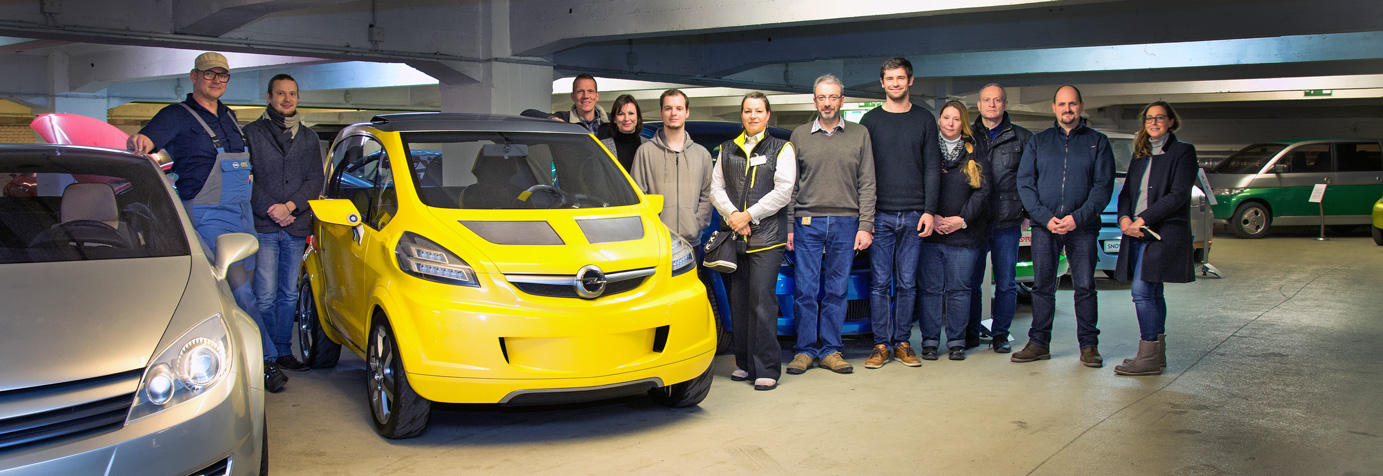
Gruppenfoto mit Trixx: Jens Cooper (links) zusammen mit den Gewinnern in den Katakomben der Classic Werkstatt.
- We have put together a concise photo series of the striking concept cars for Opel Post readers.
- INSIGNIA (2003) The story of the Opel flagship model began in the year 2003, when Opel presented a concept car by the name of Insignia at the IAA International Motor Show in Frankfurt, Germany. This vehicle featured a number of basic characteristics that would reappear in the Series model five years later – take a look at the front, shoulder, and roof line, which is evocative of a Coupé. “Unfortunately,” confides Jens Cooper, “this concept car was a bit too large, which is why the designers subsequently focused on creating more compact designs.” The creatives drafted over 500 design sketches before deciding on the final Insignia style.
- GTC CONCEPT (2007) The result of all this work was visible at the 77th Geneva Motor Show four years later, where Opel presented this silk gray racecar, ushering in an entirely new era of design in the process. The athletic Gran Turismo Coupé featured an aggressive front atop thick 20-inch wheels, a full 300 HP for excellent propulsion, and a 2.8-liter V6 turbo engine. “It was a real dynamo on the road,” said Jens Cooper. An intelligent, electronically controlled all-wheel drive system distributed power as the car drove. Moreover, this study was the first to feature the new, plastic brand logo on its crossbar.
- MANTA B DESIGN STUDY (1971) Room for a license plate? Stable A-pillar? Form follows function? So what? What really counts here is the car’s beautiful, purist design; its elegant, athletic lines; its Targa-style roof; its large windows. Says Cooper: “The design studio, under the direction of Erhard Schnell, was already working on a potential successor to the Manta A after it went into production. In doing so, the team was freed from the restrictions of traffic regulations.” This 1:1 fiberglass model did not leave the design stage. “It’s timelessly beautiful, but it wouldn’t be feasible to build,” says Cooper. The designers merely hinted at the model’s interior, without including any technical components.
- CORSA MOON (1997) The year is 1997. The Corsa has been sold an impressive 2.7 million times so far, in 75 countries around the world. High time, then, to conquer new territory, beyond the earthly realm. Opel creatives unveiled this special, tongue-in-cheek model, which embodies ‘extraterrestrial elegance,’ at a Corsa press conference in Tenerife, Spain, The accompanying press release read: “Air-independent wheels guarantee weightless comfort. The ecobeam and Indra solar turbo technology enable gentle, linear acceleration and a maximum speed of Mach 0.01.”
- JUNIOR (1983) ‘Junior’ was the working title for the car now known as ADAM. This name was a reference to the original Junior, which premiered in 1983. A progressive exterior design means that even after a good 30 years, this 3.41-meter-long study still doesn’t look dated. It also boasts an impressive interior: The seat covers are removable and can be used as sleeping bags, while the removable containers in the doors double as shopping baskets. Moreover, the vehicle features a modular design: All of the modules, such as the odometer, tachometer, and on-board computer, can be flexibly plugged in to the dashboard.
- TRIXX (2004) Powerful lines, short overhangs, and an emotional take on Opel design: Opel presented this super-compact city car study with sliding doors at the Geneva Motor Show in 2004. Although it is a mere three meters long, it can fit up to three adults and one child. Thanks to its flexible design, this small car can also stow away all sorts of baggage. The backseat is inflatable, and the passenger seat can be folded down. “And if you have to transport a standing lamp, you can open the ceiling hatch specially created for that purpose,” adds Cooper.
- OSV 40 (1974) Opel presented this experimental safety vehicle based on a Kadett at a time when features such as airbags and ABS still were a long way off from becoming standards. This model demonstrated how vehicle occupants could be better protected, following the basic design principle of incorporating high-performance crumple zones. The car’s soft bumpers, equipped with hard polyurethane foam, absorb the shock of a crash at up to 8 km/h without deforming. The sheet metal surfaces in the car’s interior are also generously cushioned with foam. “The OSV performed above average in crash tests. All four doors could still be opened after a crash at 65 km/h,” explains the Opel expert. Innovations resulting from the consistent further development of the crumple zones and belt tensioners later went into series production. “However, the synthetic foam in the interior was detached from the airbag.”
- KADETT STROLCH PROTOTYPE (1938) Database matching carried out in the archive in 2008 revealed photos of a vehicle that immediately excited the Opel Classic team. They learned that Opel designers had developed a graceful two-seater convertible sedan based on the popular Kadett in 1938. The test team assembled a prototype with an all-steel chassis and photographed it at the plant facilities in Rüsselsheim, Germany. This model was never put into series production. “One thing was clear to us from looking at the photos: We simply had to create a prototype,” said Cooper. A Kadett 38 served to supply replacement parts. “This Strolch is a one-of-a-kind model, and an excellent addition to our collection,” said Cooper.
- TWIN (1992) This electric car prototype caused quite a stir in Geneva in 1992. In designing this vehicle, the Opel engineers addressed the issue of range in a very unique way: The drive unit and electric engine can be replaced with a three-cylinder combustion engine for long routes. The replacement modules each contain the respective engine and energy storage device as well as the rear axle and rear wheels. This car also features a unique interior: The driver sits in the middle, and there is room for additional passengers on the backset. Says Cooper: “This concept would have done away with the need for manufacturing left- and right-hand drive versions.”
Februar 2017
